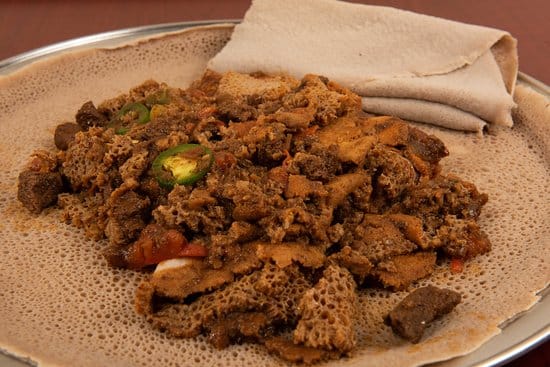In Ethiopia, the consumption of raw meat, known as “Tir Siga,” is not just a culinary preference but a deeply ingrained cultural tradition that has been passed down through generations. While it may seem unconventional to some, Tir Siga holds a special place in Ethiopian cuisine and social gatherings, offering a unique and flavorful experience for those willing to indulge.
Tir Siga is typically made from finely chopped pieces of raw beef, seasoned with a variety of spices and served fresh. The meat is often marinated with ingredients such as mitmita (a fiery chili powder blend), awaze (a spicy Ethiopian paste), salt, and sometimes a touch of lime juice for added flavor. This meticulous preparation ensures that the meat is not only safe to consume raw but also bursting with bold, aromatic flavors.
The consumption of raw meat is not limited to any specific region or social class in Ethiopia. Instead, it is enjoyed by people from all walks of life, whether in urban centers or rural villages. In fact, Tir Siga is often a centerpiece of social gatherings, festive celebrations, and traditional ceremonies, where friends and family come together to share a communal platter of freshly prepared raw meat.
Partaking in Tir Siga is not just about the culinary experience; it is also a symbol of hospitality, friendship, and camaraderie. Ethiopians believe that sharing food, especially raw meat, fosters a sense of unity and strengthens social bonds among participants. The act of sitting around a shared platter, tearing off pieces of injera (traditional Ethiopian flatbread) to scoop up the meat, and engaging in lively conversation is a cherished cultural practice that brings people closer together.
While Tir Siga is primarily enjoyed for its rich flavors and cultural significance, it is also believed to have certain health benefits. Raw meat enthusiasts often tout its high protein content, claiming that it provides a natural energy boost and aids in muscle recovery. Additionally, some believe that consuming raw meat can improve digestion and boost the immune system, although these claims are not scientifically proven.
Despite its popularity and cultural significance, Tir Siga consumption is not without controversy. Health concerns, including the risk of bacterial contamination and foodborne illnesses such as E. coli and salmonella, have raised questions about the safety of consuming raw meat. In response, many restaurants and food establishments take precautions to ensure the quality and freshness of the meat, often sourcing it from trusted suppliers and adhering to strict hygiene standards.
Moreover, in recent years, there has been a growing trend toward more cautious consumption practices, with some Ethiopians opting for cooked or partially cooked meat dishes as a safer alternative. However, for many, the allure of Tir Siga lies not just in its taste but in its cultural significance and the sense of tradition it embodies.
In conclusion, Tir Siga consumption in Ethiopia is more than just a culinary choice; it is a cherished cultural tradition that reflects the country’s rich heritage and communal spirit. While debates about its safety and health implications persist, Tir Siga continues to hold a special place in the hearts and palates of Ethiopians, serving as a testament to the enduring traditions and values that define Ethiopian cuisine and culture.



